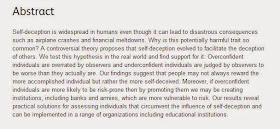When a friend made a proposal to try to manage the disaster that is unemployment in visual effects and computer animation in this country, his proposal required that visual effects and computer animation companies work together in some way in the area of labor, somehow sharing people in a way that I did not understand. Of course. Sure, makes perfect sense. After all, the production facilities are well known for cooperating in this and so many other areas.
Just kidding. The only thing the facilities do to each other is to beat each other over the heads and shoulders and try to get in a killing blow. I can cite example after example in which the worst human behavior is exhibited by one facility against another. They see life and the world as a zero sum game, if they win then the others must lose and vice versa.
Well, I was wrong. To my amazement, three important facilities in animation and visual effects collaborated in an important area for years but they kept it quiet because of their inherent modesty and good will. Their collaborative efforts were directed for the greatest good of society and in the greatest traditions of American industry which aspires to grossly violate labor laws and destroy the economic well-being of their workers.
Just kidding. The only thing the facilities do to each other is to beat each other over the heads and shoulders and try to get in a killing blow. I can cite example after example in which the worst human behavior is exhibited by one facility against another. They see life and the world as a zero sum game, if they win then the others must lose and vice versa.
Well, I was wrong. To my amazement, three important facilities in animation and visual effects collaborated in an important area for years but they kept it quiet because of their inherent modesty and good will. Their collaborative efforts were directed for the greatest good of society and in the greatest traditions of American industry which aspires to grossly violate labor laws and destroy the economic well-being of their workers.
It all starts about a year ago when a founder of an important early
computer animation company made a public proposal to address some of the dilemmas
facing employment in this country for the computer animation proletariat.
My
criticisms of his plan were as follows: a. it did not address the
subsidies that made certain industries, particularly visual effects,
uneconomic in this country. b. it assumed that visual effects and
animation companies could be cooperative in their use of labor, which
I doubted, and c. it did not address the problem of vast oversupply
of people who were qualified or thought they were qualified to work
in production, thus driving prices down for labor and making it
unlikely that they would be able to earn a living wage or live in
security in this field.
Furthermore, my idealistic friend is well aware of the normal competitive nature in the field, as the facility he started and managed for many years was among the worst offenders,
The
normal mode of fierce Darwinian struggle was first expressed to me by
my friend's business partner, who pointed out how it was a strategy
of their company to drive their competitor out of business by any
means possible and then absorb the former employees that they had
selected as suitable, thus destroying any ability of the out-of-business company to reconstitute itself. An excellent strategy I
think, and filled with all the positive values that I would expect
from an executive in the field of computer animation.
I
would say that this philosophy so elegantly expressed by my friend's
partner does describe the default level of cooperation between the
facilities: not only is there *no* cooperation but there are active
efforts at all times to destroy the competition (which is to say, any
other facility) and devour their flesh, laughing, and reinvent
history to demean and despise their former enemy.
But in a shocking reversal, it was recently announced that three important companies in the field not only considered working together in common cause, but had actually been doing so for years. Instead of mere blind competition, red in tooth and claw,
these three companies, Pixar, ILM and Dreamworks, were able to set aside their normal competitive nature and
demonstrate a noble spirit of collaboration by grossly violating
employment laws and conspiring together to see that the mere worker,
despised by all corporations in America, are deprived of a fair wage in any sense of the word and in any way competitively determined. Competition is for when it benefits the rich, not when it benefits the worker, as we all know.
It
goes without saying that having worked so selflessly to abuse the
worker in a cooperative manner, that those who were found guilty were
not punished in any substantial manner. Why should they be? This is America after all.
Thus we have proof that computer animation (and visual effects) facilities can work together towards a common goal, at least when it involves crime. So maybe my friend's proposal needs to be rewritten so that it incorporates some gross violation of law and ethics, and then maybe we can get the facilities to cooperate for the common good. That might work.
Thus we have proof that computer animation (and visual effects) facilities can work together towards a common goal, at least when it involves crime. So maybe my friend's proposal needs to be rewritten so that it incorporates some gross violation of law and ethics, and then maybe we can get the facilities to cooperate for the common good. That might work.









